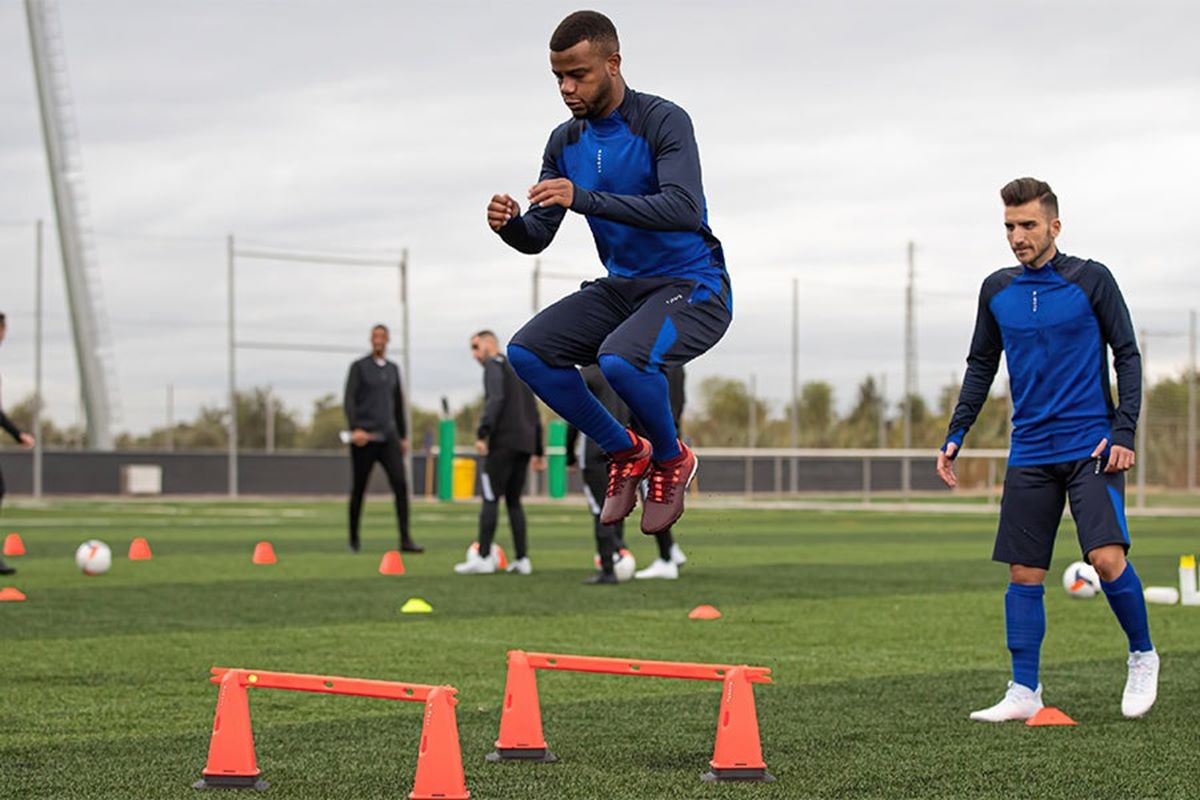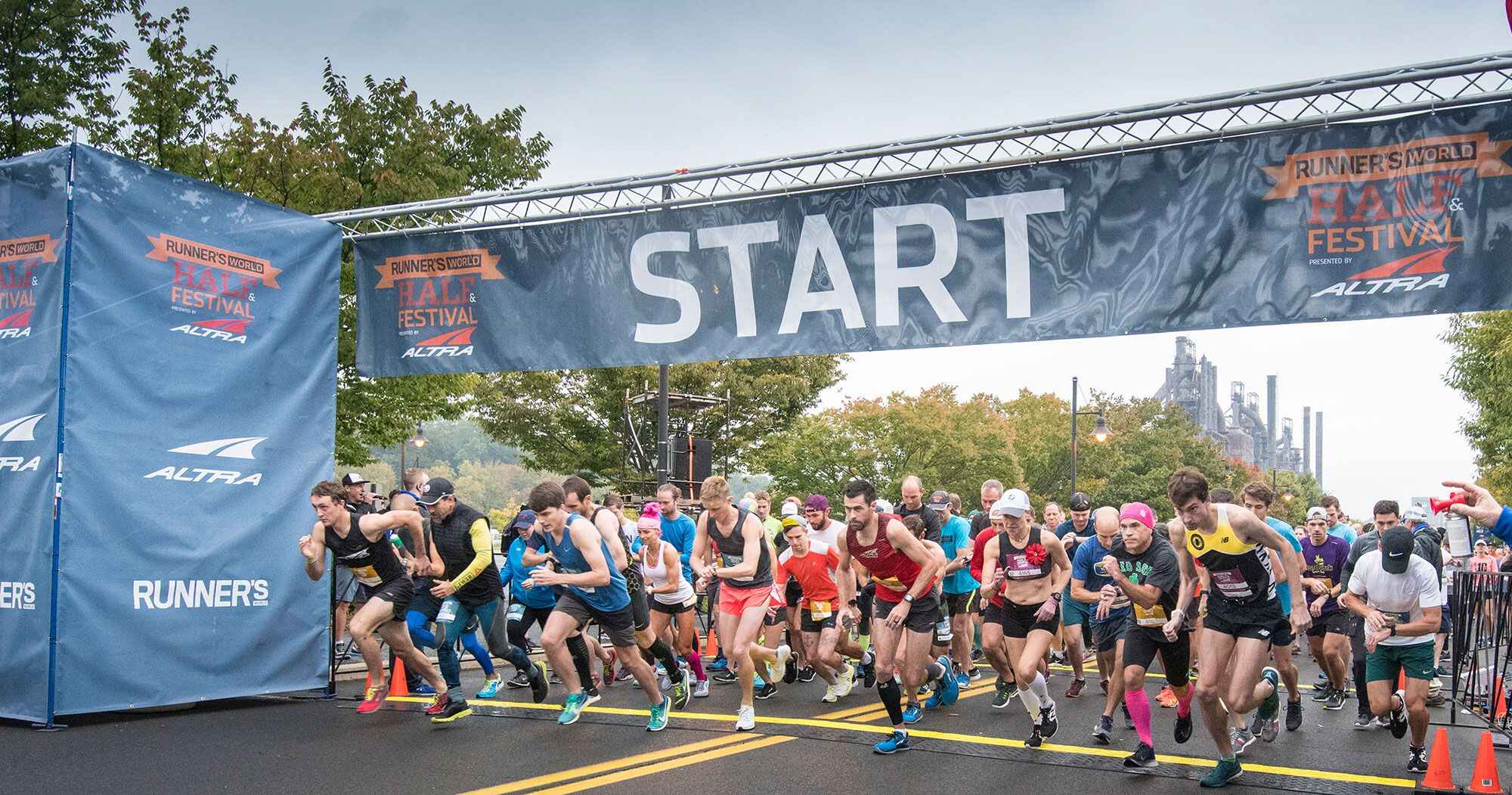

Featured
How To Build Up Stamina For Tennis
Published: October 15, 2023
Improve your tennis performance with featured tips on how to build up stamina for a longer-lasting game. Enhance your endurance and keep up with intense rallies on the court.
Introduction
Playing tennis requires a unique combination of skill, agility, and endurance. One of the most crucial aspects of the game is stamina—a player’s ability to sustain physical and mental effort over a prolonged period of time. Building up stamina is essential for tennis players to perform at their best, maintain consistency, and outlast their opponents on the court.
Stamina encompasses various physical and mental factors, including cardiovascular fitness, muscular strength, flexibility, and mental resilience. It is not something that can be developed overnight; rather, it requires consistent effort and a well-rounded training regimen. In this article, we will explore the importance of stamina in tennis and provide valuable insights on how to build it up effectively.
Having good stamina on the tennis court not only allows players to keep up with the fast-paced nature of the game but also enables them to recover quickly between points and sets. It helps players stay focused, make quick decisions, and execute their shots with precision even during the later stages of a match. Additionally, improved stamina can reduce the risk of injuries by enhancing overall endurance and preventing fatigue-related mistakes.
Whether you are a beginner or a seasoned tennis player, there are various strategies to enhance your stamina and elevate your game. From adopting the right nutrition plan to incorporating specific cardiovascular, strength, and flexibility exercises into your training routine, there are several approaches that can significantly boost your endurance and overall performance on the tennis court.
In the following sections, we will delve into the different aspects of stamina building for tennis players. By implementing these techniques and making stamina development a priority, you can enhance your endurance and take your tennis game to a whole new level.
Importance of Stamina in Tennis
Stamina plays a vital role in tennis performance, as it directly influences a player’s ability to sustain effort throughout a match. Here are some key reasons why stamina is of utmost importance in the game:
- Enduring Long Matches: Tennis matches can be physically demanding, especially in tournaments where players often compete in multiple matches over several days. Having good stamina allows players to maintain a high level of play and stay competitive, even during long, grueling matches that can last for hours.
- Consistency and Accuracy: As a tennis match progresses, fatigue can impact a player’s coordination, timing, and decision-making abilities. With improved stamina, players are more likely to maintain consistent stroke production and accuracy, increasing their chances of winning crucial points.
- Quick Recovery: Efficient recovery between points, games, and sets is crucial in tennis. Good stamina allows players to bounce back quickly from intense rallies, reducing downtime and maintaining momentum. This is particularly essential in fast-paced matches or tie-break situations.
- Mental Resilience: Stamina isn’t just physical; it also encompasses mental endurance. Tennis can be mentally demanding, with players needing to stay focused, motivated, and resilient throughout the match. Good stamina helps players maintain mental clarity and handle pressure, making them more likely to make optimal decisions and cope with challenging situations.
- Preventing Injuries: Fatigue can lead to poor form, reduced coordination, and increased risk of injuries. Building stamina strengthens muscles, improves overall fitness, and reduces the likelihood of fatigue-related mistakes. This can help prevent injuries and maintain physical health on and off the court.
Understanding the importance of stamina in tennis underscores the need for players to dedicate time and effort to its development. By focusing on stamina-building exercises and incorporating them into a well-rounded training routine, players can enhance their endurance and excel in their tennis endeavors.
Proper Nutrition for Building Stamina
Proper nutrition plays a vital role in building stamina for tennis players. Fueling your body with the right nutrients before, during, and after training or matches can optimize your energy levels, improve endurance, and accelerate recovery. Here are some key guidelines for a well-rounded diet to build stamina:
- Stay Hydrated: Adequate hydration is essential for optimal performance. Drink water before, during, and after training or matches to prevent dehydration and maintain energy levels. Electrolyte-rich beverages can also be beneficial for replenishing electrolytes lost through sweating.
- Balance Macronutrients: Your meals should include a balance of carbohydrates, proteins, and healthy fats. Carbohydrates provide the primary fuel source for energy, so prioritize complex carbohydrates like whole grains, fruits, and vegetables. Protein is important for muscle repair and recovery, so incorporate lean sources such as poultry, fish, tofu, or legumes. Healthy fats from sources like avocados, nuts, and olive oil provide sustained energy.
- Timing is Key: Plan your meals and snacks strategically to maintain steady energy levels. Eat a balanced meal containing carbohydrates, proteins, and fats two to three hours before a match or training session. For shorter bouts of exercise, opt for a light snack 30 minutes to an hour beforehand. Refuel with a combination of carbohydrates and protein within 30 minutes after exercise to promote muscle recovery.
- Choose Nutrient-Dense Foods: Focus on whole, unprocessed foods that are rich in vitamins, minerals, and antioxidants. These foods provide sustained energy and support overall health. Include a variety of fruits, vegetables, lean proteins, whole grains, and healthy fats in your diet.
- Supplement Wisely: While proper nutrition can usually meet your needs, certain supplements can support stamina building. Consult with a healthcare professional or sports nutritionist to determine if supplements like creatine, B vitamins, or beta-alanine are appropriate for you.
Remember to listen to your body and make adjustments based on individual needs and preferences. Experiment with different meal timing, portion sizes, and food combinations to find what works best for you. By fueling your body with the right nutrients, you can enhance your stamina, optimize performance, and maximize your potential on the tennis court.
Cardiovascular Exercises for Tennis Stamina
Cardiovascular exercises are essential for building stamina in tennis. These exercises increase your heart rate, improve lung capacity, and enhance your overall endurance. Here are some effective cardiovascular exercises that specifically target stamina building for tennis players:
- Running and Jogging: Regular running or jogging sessions are excellent ways to build cardiovascular fitness. Incorporate both long-distance runs and interval training to improve endurance and simulate the stop-and-start nature of tennis.
- High-Intensity Interval Training (HIIT): HIIT workouts involve short bursts of intense exercise followed by brief recovery periods. This type of training is highly effective for building stamina as it mimics the intensity and intermittent nature of tennis matches. Examples of HIIT exercises include sprints, burpees, and jumping jacks.
- Cycling: Cycling is a low-impact cardiovascular exercise that can be done outdoors or on a stationary bike. It helps strengthen the legs, improves cardiovascular fitness, and builds stamina. Vary your cycling workouts by incorporating interval training and hill climbs to make them more challenging.
- Jumping Rope: Jumping rope is a fantastic cardiovascular exercise that can be done almost anywhere. It improves coordination, footwork, and endurance while providing an intense full-body workout. Incorporate intervals of fast-paced jumping and short rests to simulate the intensity of tennis rallies.
- Agility Drills: Tennis requires quick movements in all directions, so integrating agility drills into your training helps improve stamina and footwork. Set up cones or markers to create a course, and practice fast directional changes, lateral movements, and quick sprints.
- Swimming: Swimming is an excellent low-impact exercise that works the entire body and increases cardiovascular fitness. It helps build endurance while reducing stress on the joints. Incorporate interval training by alternating between fast and slow laps to improve stamina.
When incorporating cardiovascular exercises into your training routine, aim for at least three to five sessions per week. Start with lower intensity workouts and gradually increase the intensity and duration as your fitness levels improve. Remember to warm up, cool down, and stretch before and after each session to prevent injuries and enhance recovery.
By regularly incorporating cardiovascular exercises into your training regimen, you can enhance your cardiovascular fitness, increase your stamina, and withstand the physical demands of tennis matches more efficiently.
Interval Training for Tennis Stamina
Interval training is a highly effective method for building stamina specifically tailored for tennis players. It involves alternating between high-intensity bursts of exercise and short recovery periods, simulating the intense and intermittent nature of tennis matches. Here’s how to incorporate interval training into your stamina training routine:
- Sprints: Find an open space, such as a tennis court or a track, and sprint at maximum effort for a short distance (e.g., 50-100 meters). Allow yourself ample recovery time before repeating the sprint. Gradually increase the number of sprints you perform within a training session to challenge your stamina and speed.
- Court Drills: Set up a series of markers or cones on the tennis court and perform explosive movements between them. Examples include side shuffles, quick lateral movements, and forward-backward sprints. Alternate between high-intensity bursts and recovery periods, repeating the drills multiple times.
- Shadow Tennis: This exercise involves simulating the movements of a tennis match without a ball. Move around the court and perform strokes as if you were playing a real match, focusing on maintaining intensity and footwork. Alternate between periods of faster and slower movements to challenge your stamina and agility.
- Interval Circuit Training: Incorporate a variety of cardiovascular and strength exercises into a circuit format. Alternate between high-intensity exercises, such as burpees or jump squats, and recovery exercises like planks or walking lunges. Repeat the circuit multiple times, increasing the number of circuits as your stamina improves.
- On-Court Intervals: During practice sessions, incorporate interval training into drills and match simulations. For example, play points or mini-matches where you alternate between high-intensity rallies and short recovery periods. This not only builds stamina but also helps improve decision-making and shot execution under fatigue.
- Tabata Training: Tabata is a specific form of high-intensity interval training that involves 20 seconds of maximum effort followed by 10 seconds of rest, repeated for a set number of cycles. You can apply this timing to various exercises such as jumping jacks, squats, or shuttle runs to boost your stamina.
When implementing interval training, it’s important to start at a level that suits your current fitness level and gradually increase the intensity and duration over time. Proper warm-up and cool-down periods are crucial to prevent injuries and optimize recovery.
By incorporating interval training into your tennis stamina regimen, you will improve your anaerobic capacity, enhance your endurance, and be better equipped to handle the physical demands of intense matches.
Strength Training for Tennis Stamina
While cardiovascular and interval training are essential for building stamina in tennis, strength training is equally important. Strength training helps improve overall physical fitness, enhances muscular endurance, and supports stamina development. Here are some key guidelines for incorporating strength training into your stamina-building routine:
- Compound Exercises: Focus on compound exercises that target multiple muscle groups simultaneously. Examples include squats, lunges, deadlifts, push-ups, and rows. These exercises help build overall strength and improve functional movements relevant to tennis.
- Resistance Training: Utilize resistance bands, dumbbells, or barbells to add external resistance to your exercises. Gradually increase the weight or resistance to continually challenge and stimulate muscle growth. Aim for 2-3 strength training sessions per week, allowing for adequate rest and recovery between sessions.
- Specific Tennis Movements: Incorporate exercises that mimic the movements used in tennis, such as rotational twists, overhead presses, and lateral lunges. These exercises help improve muscular strength and endurance in the specific muscles used for tennis strokes and movements.
- Functional Training: Include exercises that improve core stability and balance, as these are crucial for generating power and maintaining control on the court. Planks, Russian twists, and single-leg exercises are effective in building core strength and stability.
- Plyometrics: Plyometric exercises, such as box jumps, lateral bounds, and medicine ball throws, can be beneficial for developing explosive power and quick movements. These exercises improve muscular strength, speed, and agility – important components of stamina in tennis.
- Proper Form: To maximize the benefits of strength training and minimize the risk of injury, focus on maintaining proper form during each exercise. Start with lighter weights and gradually increase as your technique improves. If in doubt, seek guidance from a qualified fitness professional.
- Rest and Recovery: Allow adequate time for rest and recovery between strength training sessions. Muscles need time to repair and grow stronger. Incorporating rest days and including flexibility exercises can enhance recovery and prevent overtraining.
Remember, the goal of strength training for tennis stamina is to improve muscular endurance rather than focusing solely on heavy lifting. Tailoring your workouts to target the specific muscles involved in tennis movements will help you develop the strength and stamina necessary to perform at your best on the court.
Flexibility and Stretching Exercises
Flexibility plays a crucial role in tennis stamina by improving range of motion, reducing the risk of injuries, and optimizing overall performance. Incorporating regular flexibility and stretching exercises into your training routine can enhance your stamina and help you move more efficiently on the tennis court. Here are some effective techniques to improve flexibility:
- Static Stretching: Perform static stretches, where you hold a stretch for 15-30 seconds, targeting major muscle groups used in tennis such as quadriceps, hamstrings, calves, shoulders, and hips. Aim to stretch both sides of the body equally.
- Dynamic Warm-Up: Prior to a training session or a match, engage in dynamic warm-up exercises like leg swings, arm circles, walking lunges, or leg cradles. Dynamic stretching helps warm up the muscles, increase blood flow, and prepare the body for movement.
- Pilates or Yoga: Incorporate exercises from Pilates or yoga routines, as they focus on improving flexibility, core stability, and body awareness. These practices can help lengthen muscles, enhance posture, and increase overall body flexibility.
- Foam Rolling: Use a foam roller to self-massage your muscles, targeting areas of tightness or discomfort. This technique, known as self-myofascial release, can help release tension, improve circulation, and enhance flexibility.
- Active Isolated Stretching: Practice active isolated stretching, which involves stretching a muscle briefly, releasing the stretch, and repeating several times, gradually increasing the range of motion. This type of stretching can improve flexibility without causing muscle fatigue.
- Incorporate Stretch Breaks: Throughout the day, take short breaks to stretch and release tension in your muscles. This can be especially beneficial if you have a sedentary lifestyle or spend long periods sitting or standing.
- Post-Workout Stretching: After a training session or match, dedicate time to stretch major muscle groups while the body is still warm. This can help prevent muscle tightness, aid in recovery, and maintain flexibility over time.
Remember to listen to your body and stretch within your comfortable range of motion. Avoid bouncing or forcing stretches, as this can lead to injury. Perform stretching exercises regularly, ideally on non-consecutive days, to achieve and maintain optimal flexibility.
By improving flexibility through regular stretching exercises, you can enhance your stamina, agility, and overall performance on the tennis court.
Mental Preparation for Stamina Building
Stamina building goes beyond physical training—it also requires mental fortitude and resilience. Here are some key strategies for mental preparation that can enhance your stamina building efforts in tennis:
- Goal Setting: Set clear, specific, and realistic goals for your stamina building journey. Whether it’s improving your endurance in long matches or increasing your mental focus during intense rallies, having defined objectives will help you stay motivated and focused.
- Visualization: Utilize visualization techniques to imagine yourself performing at your best, maintaining stamina, and overcoming challenges on the tennis court. Visualize scenarios where you display mental resilience and finish matches strong.
- Positive Self-Talk: Develop a positive and encouraging inner dialogue. Replace negative thoughts and self-doubt with affirmations and positive self-talk. Remind yourself of your capabilities and focus on your strengths during challenging moments.
- Stress Management: Practice stress management techniques such as deep breathing exercises, meditation, or mindfulness to stay calm and centered during intense moments on the court. This can help conserve energy and maintain mental clarity throughout a match.
- Focus and Concentration: Train your ability to maintain focus and concentration over extended periods. Practice staying present in the moment, disregarding distractions, and re-focusing quickly after each point.
- Mental Toughness Training: Incorporate mental toughness training into your routine. This could involve pushing yourself outside your comfort zone in practices, embracing challenges, and learning from setbacks. This will help you develop resilience, determination, and the ability to sustain effort during long matches.
- Recovery and Rest: Give yourself time to recover mentally. Make sure to schedule rest days between training sessions and matches to avoid burnout. Prioritize quality sleep, engage in relaxation activities, and take time for hobbies and interests outside of tennis.
- Seek Support: Work with a sports psychologist or mental skills coach who can provide guidance and tools for mental preparation. They can help you develop personalized strategies to enhance your mental stamina and optimize your performance on the court.
Remember that building mental stamina is an ongoing process. Incorporate these mental preparation strategies into your training routine consistently to develop mental resilience and enhance your overall stamina on and off the tennis court.
Conclusion
Building stamina for tennis is a multifaceted process that involves a combination of physical and mental training. By incorporating the various strategies discussed in this article, you can enhance your endurance, performance, and enjoyment of the game.
Proper nutrition plays a critical role in fueling your body for optimal stamina. Balancing macronutrients, staying hydrated, and timing your meals can boost energy levels and recovery. Incorporating cardiovascular exercises, interval training, strength training, and flexibility exercises into your routine will enhance your physical endurance, speed, and agility on the court.
Don’t overlook the importance of mental preparation for stamina building. Visualizing success, adopting positive self-talk, managing stress, and maintaining focus and concentration can contribute to increased mental resilience and endurance during matches.
Remember, building stamina is a gradual process that requires consistency, patience, and a well-rounded approach. Tailor your training to suit your individual needs and gradually increase the intensity and duration as your fitness level improves.
By investing time and effort into stamina building, you can elevate your tennis game, outlast your opponents, and experience a greater sense of satisfaction and accomplishment on the court.









